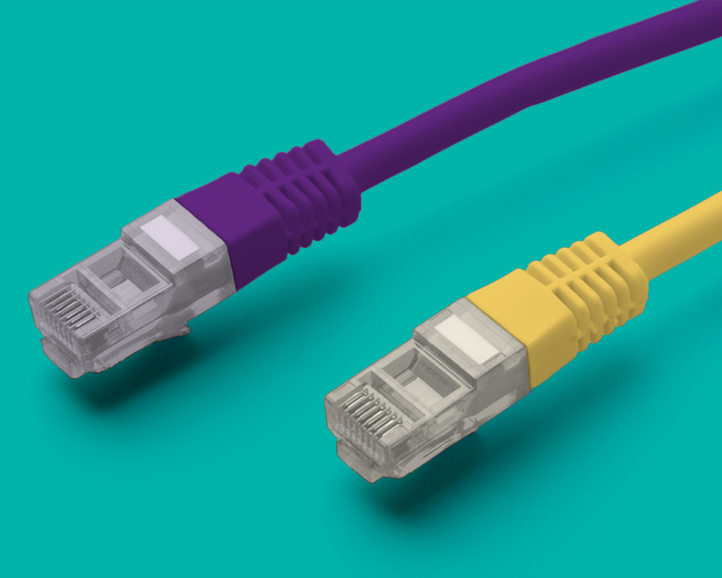SD-WAN: managed, co-managed or in-house—what is best?

Summary
If you're considering deploying SD-WAN in your company, you'll encounter three primary approaches: managed, co-managed, and in-house. Each brings unique advantages, from outsourcing expertise to resource optimization. Read on to learn which deployment model suits your company's goals, budget and IT readiness to make an informed decision.SD-WAN is a pivotal technology in the new generation of software-defined and intelligent network services. With its ability to improve network agility, boost application performance, enhance security and reduce connectivity costs, it is becoming an increasingly popular choice for many businesses.
Embarking on an SD-WAN project presents an important decision: selecting the appropriate deployment model. Should you opt for managed, co-managed or in-house SD-WAN? Which will best meet your business requirements? In assessing the various deployment models, weighing your organization's objectives, cloud strategy and future networking needs is crucial. With that in mind, let us delve into the SD-WAN deployment alternatives and offer guidance on discerning the best fit.
Types of SD-WAN deployment: Differences and considerations
The main differences between the three primary deployment options—managed, co-managed and in-house—come down to the following:
- Required internal expertise level: With managed services providers, you can rely on external experts without needing an internal knowledge center. The co-managed approach is a partnership between in-house and external specialists. Purely in-house deployment demands comprehensive internal expertise, as all operations are handled within the organization.
- Upfront capital expenditures (CapEx): Businesses often benefit from reduced initial CapEx with managed deployments since the service provider equips the necessary infrastructure and tools. Co-managed strategies may see varied costs based on the partnership's scope. Implementing in-house SD-WAN architecture requires a substantial initial investment, including acquiring, setting up and maintaining necessary tools and infrastructure.
- Internal network management responsibilities: When businesses choose managed deployment, the MSPs take on most responsibility for overseeing the network. The co-managed setup distributes this responsibility, balancing it between the company and its partner. Implementing an in-house SD-WAN requires a dedicated team to monitor and optimize network functions constantly across the organization.
Let's break down the three options to better understand the differences between the SD-WAN deployment models.
Managed SD-WAN
In a managed SD-WAN model, the service provider does all the work. The MSP guides the customers in defining the network design and security configurations. The MSP then handles the management of the network, including the configuration, monitoring and troubleshooting. This arrangement is strictly governed by a service level agreement (SLA).
The advantages of managed SD-WAN solutions include the following:
- Cost efficiency: This model negates the need to engage internal IT specialists or make significant investments in hardware, leading to lower initial expenses. MSPs consolidate all services, typically charging a fixed monthly fee.
- Ease of scalability and flexibility: SD-WAN as a service facilitates the growth and expansion of organizations. MSPs take care of all the network challenges accompanying adding new locations, like searching for local internet providers or adjusting the team to manage the network infrastructure.
- Expertise and guidance: With extensive knowledge and staying abreast of the latest trends and best practices, MSPs can assess your requirements, advocate for optimal technologies and assist in making informed decisions.
- Prioritizing core business: Delegating the network management hassle to third-party providers gives you more time to focus on the strategic initiatives of your business.
However, a potential drawback of managed SD-WAN is the limited direct control over your SD-WAN infrastructure. This model relies on the SD-WAN service provider for network quality, robustness, and security.
To mitigate potential vulnerabilities, when selecting an SD-WAN managed service provider, prioritize vendor- and carrier-agnostic, with extensive expertise and experience. Vendor-agnostic providers offer greater adaptability and mitigate the peril of vendor lock-in. Multi-carrier MSPs with high geo-redundancy and carrier diversity guarantee network flexibility and optimal dependability.
Co-managed SD-WAN
While managed SD-WAN will be the best fit for most organizations, some prefer a co-managed model. This approach allows them to leverage an MSP while retaining direct control over certain aspects of network infrastructure. Such a model might be apt for companies with an established internal networking team or those necessitating control over specific functions.
Within the co-managed model, the service provider focuses on day-to-day management and ensuring network stability while the organization retains control over strategic decision-making, policy management and specific network segments.
The benefits of co-managed SD-WAN are:
- Synergistic effect: This deployment model enables your organization to maintain control over the SD-WAN infrastructure while leveraging third-party expertise.
- Resource optimization: Both entities bring their strengths to the table, sharing responsibilities for holistic network management.
- Timely support: This approach is tailor-made for organizations with pre-existing infrastructure and technical acumen but require additional assistance.
However, potential pitfalls might include:
- Challenging collaboration process,
- Lack of essential in-house expertise,
- Not sufficient level of control, flexibility and security.
To ensure seamless collaboration between the company and the service provider, a Responsibility Assignment Matrix (RAM) should outline clear communication and defined roles and responsibilities for jointly managing the network.
Before opting for a co-managed approach, organizations should evaluate their internal capabilities, the number of locations and the specific applications they use. Identifying areas that need to be controlled and can be handed over to the service provider is essential.
SD-WAN managed in-house
Implementing and managing SD-WAN appliances within your organization's network infrastructure is known as on-premises or DIY deployment. In this approach, your company takes full responsibility for the SD-WAN architecture's design, implementation and ongoing management.
The benefits of this model include:
- Customizability: With direct control over the network, you have the flexibility to tailor the SD-WAN setup to align with your specific requirements.
- Optimizing existing resources: By leveraging current IT assets and expertise, you can maximize your return on your human resource investments.
However, adopting this approach does come with its challenges. The responsibility of in-depth control and customization means that your IT team will shoulder a significant workload. It requires having experienced network engineers and IT specialists on board to oversee tasks like network configuration, monitoring and security. Recruiting and retaining such expertise can be a notable expenditure.
Furthermore, initial investments in hardware, software licenses and maintenance can quickly add up, and these costs might be challenging to forecast accurately at the beginning of the project.
How to choose the right SD-WAN deployment type
Choosing the best SD-WAN deployment depends on various unique factors specific to your business. Let's break down the main things to think about when picking the best setup for your needs:
Number of locations
- If your business operates in multiple locations, consider managed or hybrid SD-WAN deployment. Service providers allow you to connect all your sites hassle-free, without substantial investment in network infrastructure.
- Also, MSPs with nationwide coverage offer local onsite support while managing distributed locations. No matter where and how many sites your company operates—a national provider will take care of them.
IT team maturity
- Have a solid IT team with networking expertise? On-premises SD-WAN could be an option.
- Limited tech resources or know-how? Opt for SD-WAN as a service.
Budget
- In-house SD-WAN will be costlier initially because you're building the whole setup and need to take care of ongoing investments like hardware renewal and software updates.
- SD-WAN as a service often uses subscription pricing, making monthly costs more predictable.
- Hybrid models strike a balance, mixing on-premises and managed solutions.
Future growth:
- Planning to expand? Managed or co-managed SD-WANs are more scalable. Your MSP will do the heavy lifting for an incremental cost per new location.
- On-premises setups might mean more hardware or new systems as your business grows.
In essence, the right SD-WAN fit hinges on understanding your business's current situation and where you want to take it. Also, ensure that whichever SD-WAN you choose allows for cohesive orchestration. It's all about keeping a clear view of your network and making it work to reach your goals.
How GoCo can help with managing your company’s network
GoCo is a leading provider of managed SD-WAN solutions in Canada. Partnering with GoCo gives your business access to award-winning SD-WAN technologies, deep networking expertise and national multi-carrier connectivity.
Join our thousands of customers and explore the benefits of our managed SD-WAN services for your business.



